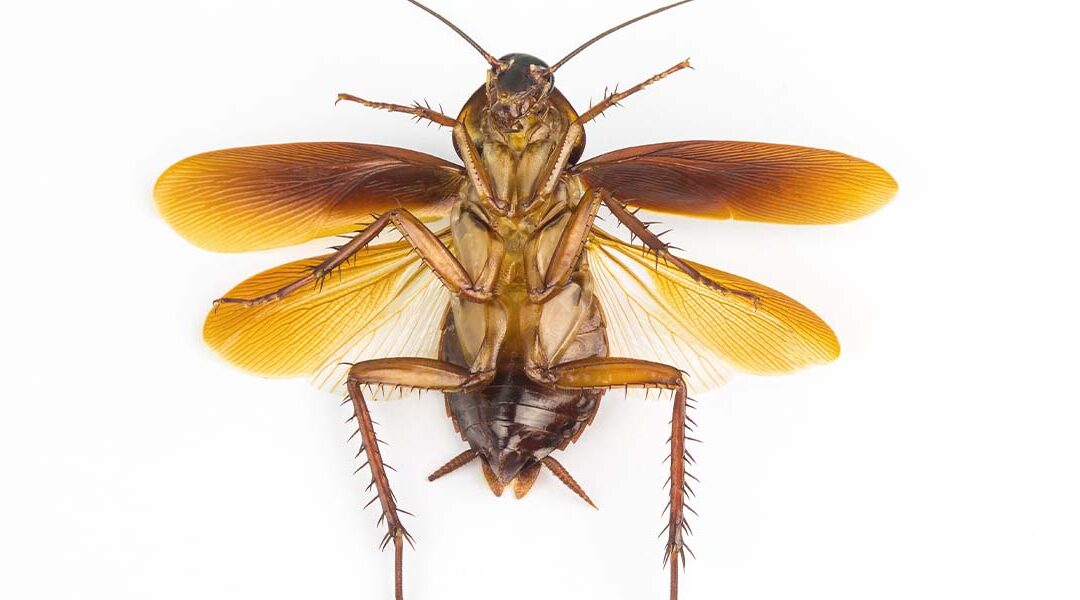It’s a bit late and you’re in the mood for a little snack. It’s a guilty pleasure, one you enjoy immensely. After eating the last bite, you clean up and throw away the trash, when you notice ants scampering around the trash can. Oh boy, it looks like sugar ants are eating the tiniest of scraps. So, you grab a can of ant and roach spray, only to find a roach in the corner. As you spray, the insects scatter. Thankfully, none of them can fly away or straight into your face. Or, can they?
Do Roaches Fly? And If So, Which Ones?
When it comes to pests, few evoke as much fear and revulsion as cockroaches. These resilient insects have been around for millions of years, adapting to almost every environment on Earth. One question that often arises when discussing cockroaches is: Can roaches fly?
The answer, as with many things in the animal kingdom, is not as straightforward as one might think. In what follows, we will boldly go right into the disgusting world of cockroaches, exploring their anatomy, behavior, and the various species that can or cannot fly.
Understanding Cockroach Anatomy
To understand whether cockroaches can fly, it’s essential to first explore their anatomy. Cockroaches belong to the order Blattodea, which includes about 4,600 species. Most cockroaches have a pair of wings, which are divided into two types:
- Forewings (Tegmina). These are the outer pair of wings that are leathery and tougher. They serve as a protective covering for the hindwings.
- Hindwings. These are the inner pair of wings, which are more delicate and are used for flying in species capable of flight.
Despite having wings, not all cockroaches are adept fliers. The ability to fly varies significantly among different species.
Flying Cockroach Species
While several cockroach species have the capability to fly, the frequency and distance of their flights can vary. Here are some of the most well-known flying cockroach species:
- American cockroach (Periplaneta americana). The American cockroach is one of the largest cockroach species, measuring up to 2 inches in length. They have well-developed wings and can fly, although they prefer to glide short distances rather than sustain prolonged flights.
- Australian cockroach (Periplaneta australasiae). Similar in appearance to the American cockroach, the Australian cockroach is also capable of flight. They are often found in warmer climates and are known for their agility in the air, particularly when disturbed or seeking food.
- Asian cockroach (Blattella asahinai). Native to Southeast Asia, the Asian cockroach is a strong flier. Unlike other species that might only glide, the Asian cockroach is known to fly towards light sources, making them more visible in the evening and at night.
Non-Flying Cockroach Species
While some cockroaches are capable of flight, many others are not. These species have wings that are either underdeveloped or are simply used for gliding short distances.
- German cockroach (Blattella germanica). The German cockroach is one of the most common household pests worldwide. Despite having wings, they rarely, if ever, fly. Instead, they rely on their legs for rapid movement.
- Oriental cockroach (Blatta orientalis). Also known as water bugs, Oriental cockroaches have wings but are unable to fly. Their wings are more of a vestigial feature and do not support flight.
- Brown-banded cockroach (Supella longipalpa). This smaller species has wings, and while males are capable of short flights or glides, females do not fly at all. They prefer to crawl and are often found in warmer indoor environments.
Factors Affecting Flight in Cockroaches
Several factors determine whether a cockroach can fly or not:
- Species and wing development. As highlighted above, the species of cockroach plays a significant role in its ability to fly. Wing development varies, with some species having robust wings suitable for flight and others having underdeveloped or non-functional wings.
- Temperature and environment. Cockroaches are cold-blooded insects, and their activity, including flight, can be influenced by temperature. Warmer climates encourage more flight activity in species capable of flying.
- Age and size. Younger cockroaches, or nymphs, do not have fully developed wings and thus cannot fly. Additionally, the size and weight of the cockroach can affect its ability to take flight. Larger species may find sustained flight challenging.
- Motivation and threat response. Cockroaches are more likely to fly when they are threatened or in search of food. Flight is often a last resort for escape rather than a primary mode of movement.
Myths and Misconceptions
There are many myths surrounding cockroach flight. One common misconception is that all cockroaches can fly, leading to heightened fear and panic. In reality, only a subset of cockroach species are capable of flight, and even among those, flight is often limited to short distances or glides.
Another myth is that flying cockroaches are more dangerous or carry more diseases. While cockroaches can carry bacteria and pathogens, their ability to fly does not inherently make them more of a health risk. Proper pest control and hygiene practices are essential in mitigating the risks posed by any cockroach infestation, flying or not.
As you can see, the ability of cockroaches to fly depends on the species, environmental factors, and their physical development. While the idea of flying cockroaches may be unsettling, understanding their behavior and biology can help alleviate some of the fear associated with these resilient insects.
Whether they glide short distances or rely on their legs to scurry away, cockroaches remain one of nature’s most adaptable creatures. With proper knowledge and control measures, encounters with these pests can be managed effectively.
Trust Trad’s for All Your Roach and Pest Control Needs!
Don’t let roaches take over your home and put your family’s health at risk. At Trad’s Pest Control, we’ve been eliminating stubborn roach infestations in Jacksonville homes and businesses for many, many years.
Our expert technicians use targeted treatments and preventive strategies to not just kill visible roaches, but eliminate them at their source. From German roaches in your kitchen to American roaches in your garage, we have the experience and professional-grade solutions to get rid of them all.

